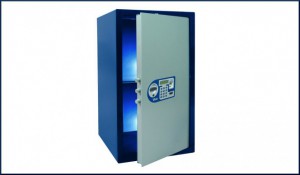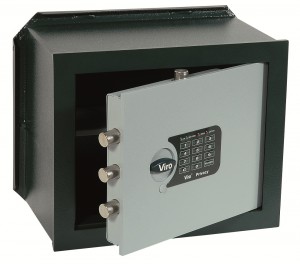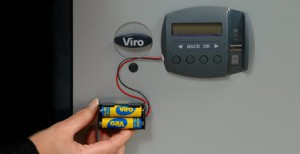When it comes to buying a safe and you are thinking about an electronic model (which generally offers more services to the user, compared to a mechanical version), the first concern is often the possibility that the batteries will run out, thus not allowing it to be opened. This possibility does exist, especially for those who only use their safe occasionally.
What do you do in such cases?
Generally, a good quality safe warns well in advance when the batteries are about to run out, allowing them to be changed before they are completely flat.
Furthermore, if a safe is fitted with a well-designed electronic card the battery consumption occurs progressively and gradually. In short, it is unlikely that there will be insufficient charge from one day to the next (which, on the other hand, is often the case with cheap products imported from the Far East).
Nevertheless, it can happen (especially if the safe is rarely used, for example in a holiday home used only during the holiday season) that the batteries can run out without the user having had time to replace them.
In general, the safes are designed with special mechanisms for emergency opening. There are two most commonly used methods:
Safes with emergency key
There are electronic safes with emergency keys which allow them to be opened even when the batteries are flat. This solution is acceptable only if the cylinder for the emergency mechanical opening is protected against burglary attempts and raises the question of where to keep the key, in order to prevent it being found by a possible thief. An effective solution may be that of keeping the key (which is only expected to be used rarely) in a place other than that where the safe is installed, for example in the home of a relative who lives nearby.
Safes with external contacts
In an attempt to minimise the risk it is therefore possible to choose an electronic safe without an emergency key. In this case, the safe must be equipped with external contacts on the keypad or a socket to which an external backup battery can be connected if the internal battery stops working. However, it is important not to forget the combination, since whilst with the emergency key, once the safe is opened, you can reset the code, in versions with external contacts it is necessary to remember the combination in order to open with the backup battery.
The innovative Viro Ram-Touch II safes, just like all those of the Viro range, are equipped with electronics with a very low and gradual battery consumption and with acoustic and visual warnings that are triggered well before the batteries are completely flat.

They also allow both the mechanical emergency opening with protected cylinder and a key profile which cannot be duplicated, and with an external power supply. They also have a log which records all the operations carried out on the safe, including the mechanical opening with an emergency key and, if used with biometric opening with fingerprints, they also avoid problems linked with forgetting the code.
Conclusions
It may be worth purchasing good quality safes to prevent the problem, thereby avoiding the unpleasant situation in which until the day before the warning the batteries seemed to be charged and then just a few days later the safe will no longer open.
However, if the batteries of a safe are running out this should not be cause for alarm because, if the product purchased is well made, there will always be a way of opening it, even if the batteries are completely flat.


